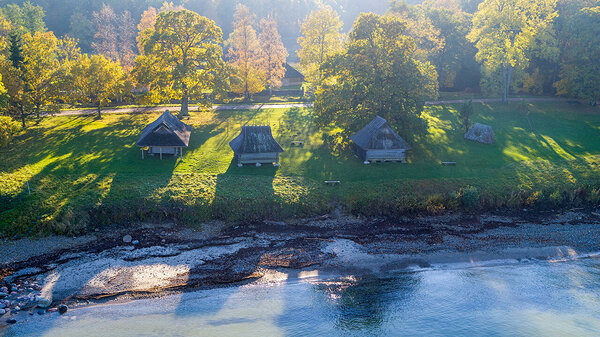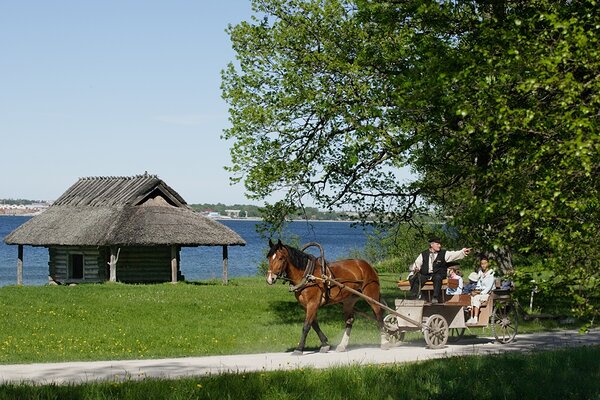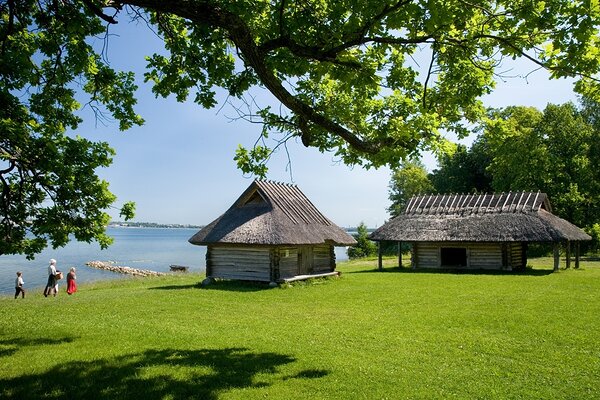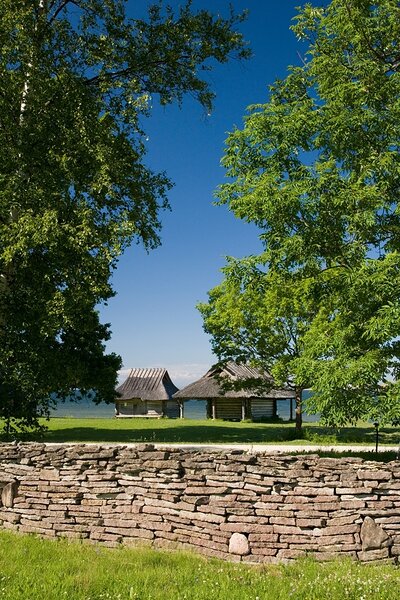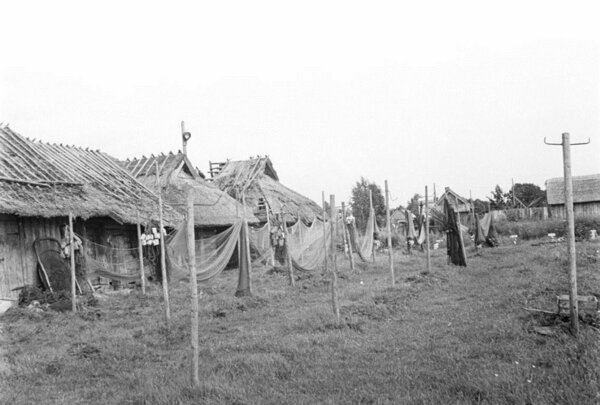Nasva net shed was built in 1876, in Kaarma parish in Nasva village on Pekri farm. It was brought to the museum in 1966.
Toomalõuka net shed is from Anseküla parish, Toomalõuka village, Lõmala beach. Built in 1880, brought to the museum in 1967.
Alvi net shed was built in 1903, in Valjala parish on Alvi beach. The museum has a replica of it, made in 1980.
The net sheds were placed at a right angle to the sea, so that an open area for drying nets was situated between them, more or less in an enclosed area. A row of wooden beams for drying each owner’s nets started at the door of each net shed. The entire net enclosure was surrounded by fencing to protect the netting from roaming grazing animals. The boat landing areas were also in the net enclosure. The boats would be kept there throughout the fishing season. In addition, the net sheds sometimes included fish smoking ovens, drying platforms, and salting sheds.
Family symbols were carved on to all of the tackle and even the drying beams so that they would not be mixed up. For islanders, all things connected to the sea were sacred. The huts were kept unlocked, and tackle was left on the beach in the open. A fellow fisherman’s equipment was used only in case of dire need and immediately replaced afterwards.
Farmyard plan
Nasva net shedDid you know?
- Women and children wove the nets in the winters. Several families would get together for collective net weaving evenings, where net weavers would square off to see who was the fastest. This was a common pastime.
- Besides nets, fish were also caught with seines. The seine was originally the property of the entire village. The seine crew was led by the most experienced fishermen and usually consisted of more people than were actually needed for the job. Instead of pitching in, an alternative was to contribute vodka or beer for a party.
- On Muhu Island, the custom was to strike sleeping people and say: “Good fish, lots of fish, lots of whitefish, lots of ides, lots of cod, lots of flounder!” It was believed that anyone who received a good beating would have good luck fishing that spring! Muhu parish - M. J. Eisen.
